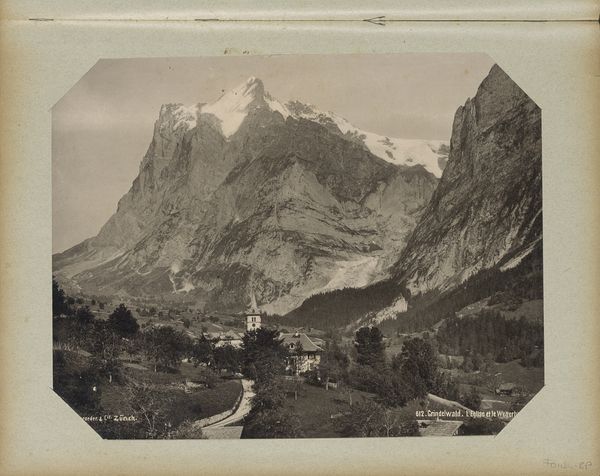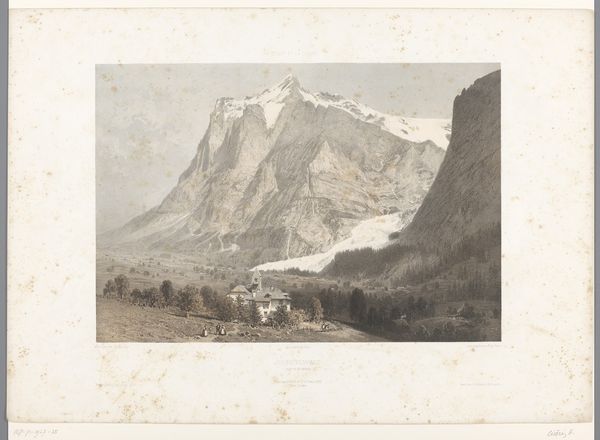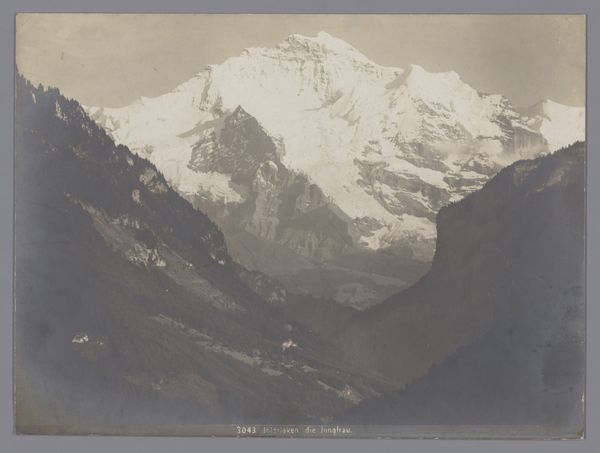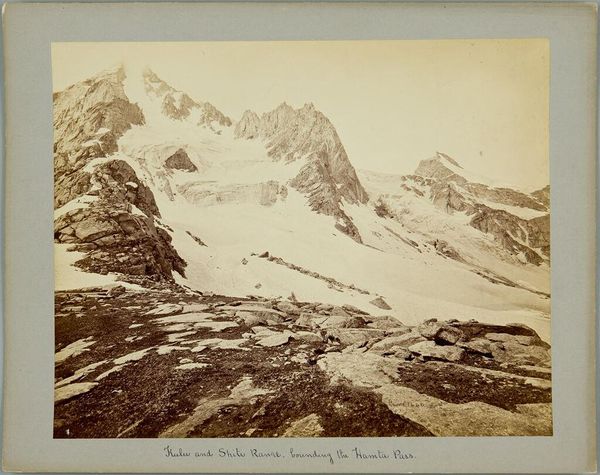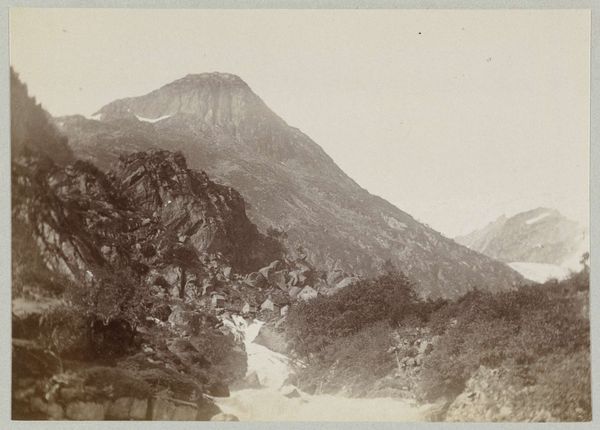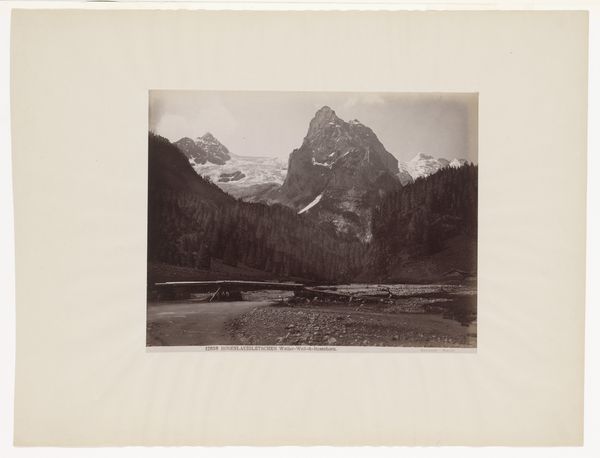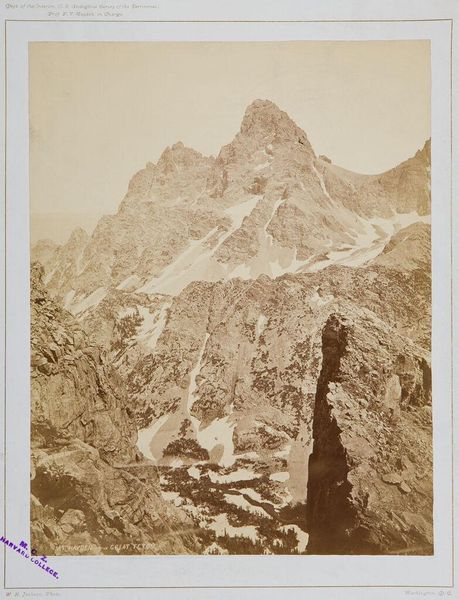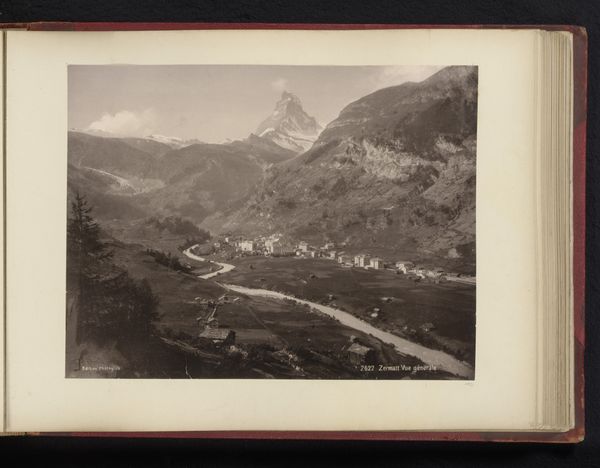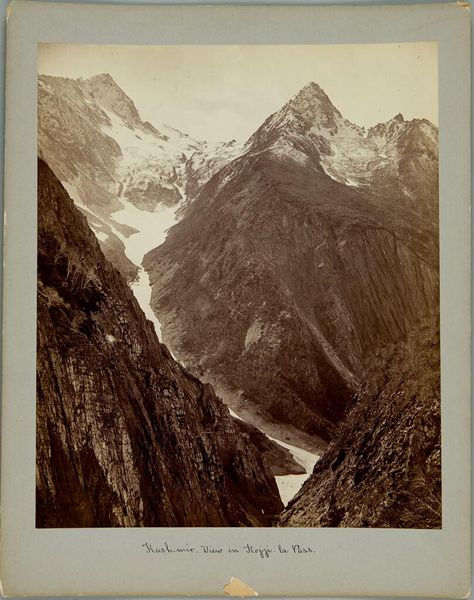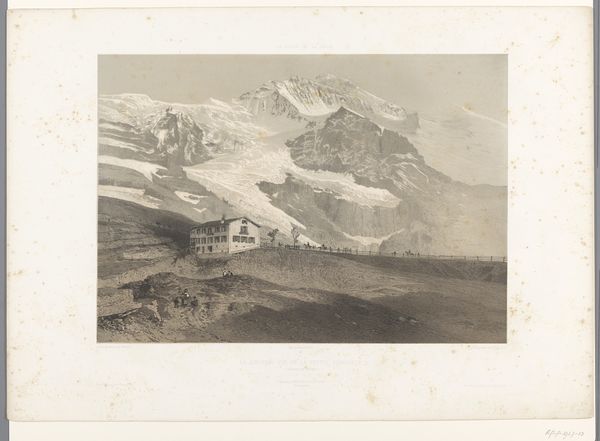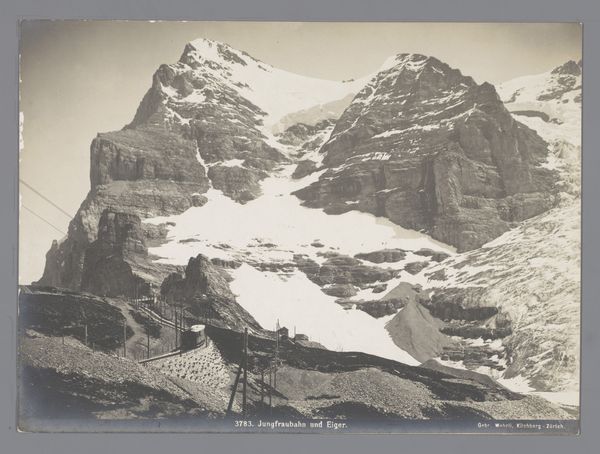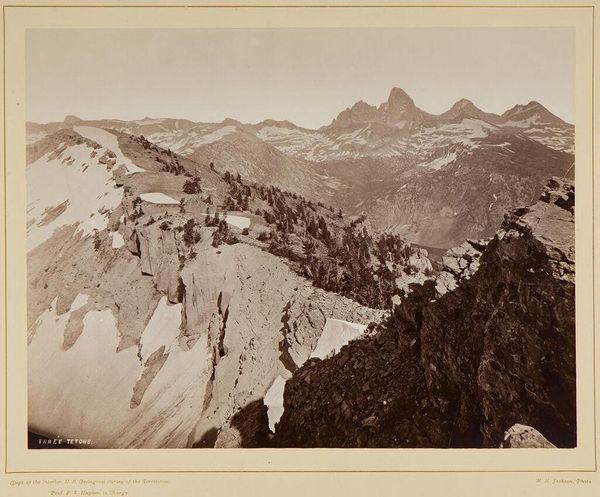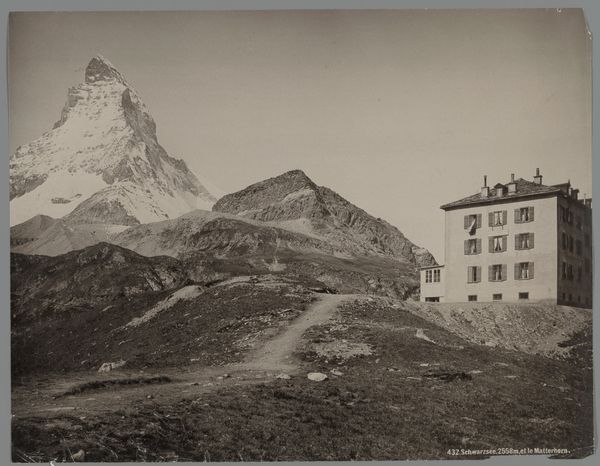
Gezicht op de kerk van Grindelwald en de Wetterhorn c. 1881s - 1891s
0:00
0:00
giorgiosommer
Rijksmuseum
photography, gelatin-silver-print
#
pictorialism
#
landscape
#
charcoal drawing
#
photography
#
gelatin-silver-print
Dimensions: height 205 mm, width 248 mm, height 277 mm, width 367 mm
Copyright: Rijks Museum: Open Domain
Editor: What a magnificent scene! This gelatin silver print, "Gezicht op de kerk van Grindelwald en de Wetterhorn," was captured by Giorgio Sommer sometime between the 1880s and 1890s. The scale of the landscape is really striking – that tiny village nestled beneath such a colossal mountain. What historical context can you offer about this work? Curator: Well, let’s consider the rise of alpinism and tourism in the late 19th century. The Wetterhorn becomes both a symbol of nature's sublime power and a desirable destination. Sommer’s choice to depict Grindelwald with the church prominently placed perhaps speaks to an attempt to reconcile the untamed wilderness with the familiar comforts of civilization, a negotiation very much at play in how the Swiss marketed themselves at the time. Editor: That’s a fascinating tension. Did the photographic techniques of the era also influence how this image was received? Curator: Absolutely. Pictorialism, with its emphasis on artistic effect and soft focus, sought to elevate photography to the level of fine art. The romantic rendering of the landscape aimed to evoke feeling and awe, drawing viewers not only to the view but to the very *experience* of seeing it. Sommer’s work exists within this cultural drive. Was he seeking to cater to wealthy tourists, seeking an "artistic" souvenir? Or document Switzerland through the same lens through which others document historical places? Editor: So the photo's value wasn't purely documentary. The intention also contributed to how it was understood at the time, that's insightful. Curator: Precisely. We often impose later values on photographs but reflecting on tourism or power is the crucial first step. And the public exhibition of such works would influence broader perceptions of Switzerland too. What did you take away? Editor: I see it now as not just a picture, but a complex cultural artifact! It speaks of a specific time, place, and the very human desire to capture, control, and, market something as grand as nature itself. Thanks for sharing these details!
Comments
No comments
Be the first to comment and join the conversation on the ultimate creative platform.
